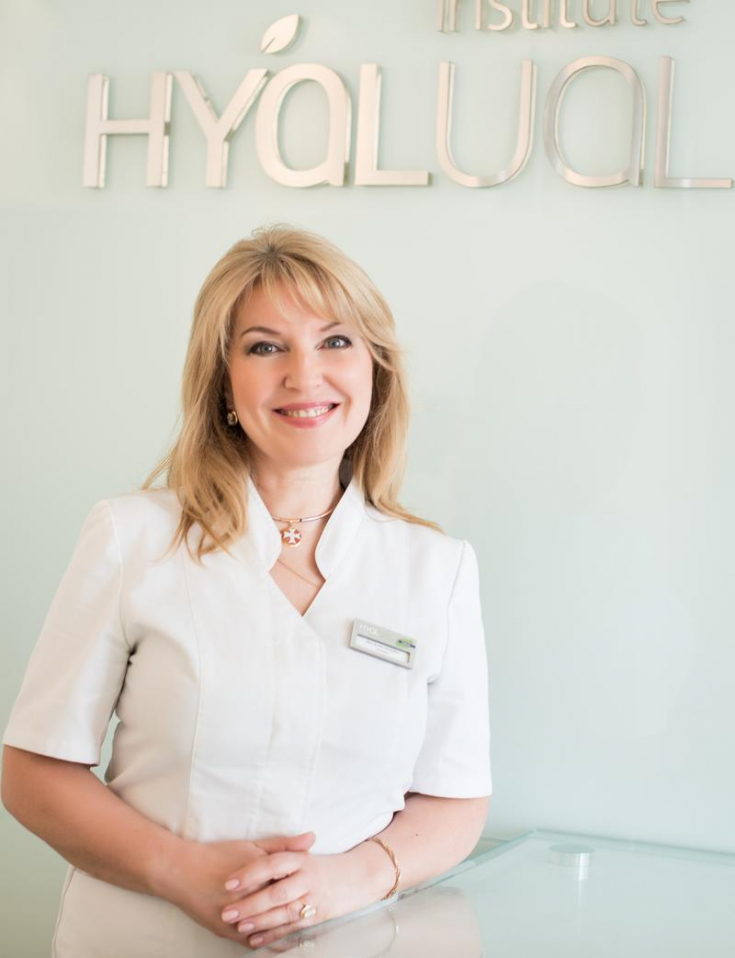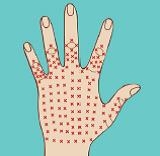The condition of the skin largely determines our overall well-being. This is not surprising, because the skin has to perform many important functions for the body: protect against external influences, protect against dangerous ultraviolet radiation and harmful ecology, produce vitamin D, remove toxins and ensure metabolic processes.
The better the skin of the body is cared for, the healthier and more confident we feel, and the longer our body retains youth. The redermalization procedure – a technique that can significantly slow down the involutional processes in the skin of the body.
Read more about the features of the procedure and techniques for its implementation on our portal.

Doctor of the highest category, plastic surgeon, full member of the Association of Plastic and Reconstructive Surgeons since 2002 Lesia Linnik.
How body skin ages and why it benefits from redermalization
Despite the insistent reminders of cosmetologists that skin not only on the face needs careful regular care, many patients neglect these recommendations, although the skin of the body betrays age no less than the face. On our body, the quality of the skin is not the same everywhere, its condition and the rate of aging largely depend on the anatomical location. So, for example, the skin in the lower abdomen or on the inner surface of the arms is very delicate, because it almost never strains and does not suffer from the sun.
The toughest leather – on the feet, elbows, knees: it is always under tension and open to external influences, it quickly becomes coarse and flaky.
However, age-related changes are most pronounced on the skin of the neck, décolleté and hands.
It is customary in matters of cosmetic care to combine the areas of the hands, neck and décolleté in the overall complex of body skin care. As a rule, other parts of the patient's body are much less of a concern, since they are mostly hidden by clothing. There are other criteria for combining these zones:
- there are far fewer sebaceous and sweat glands in the skin than in other parts of the body;
- the skin is thinner, the subcutaneous fat layer is poorly developed;
- skin is constantly exposed to the aggressive effects of the sun and other external factors;
- The condition of the skin in these areas depends on hormonal fluctuations, metabolic disorders.
It is on the hands, on the neck and décolleté that age spots and other signs of photoaging appear early, it dries more strongly, becomes flabby, and becomes covered with fine wrinkles. The redermalization procedure is designed to stop involutional changes in these areas.
Read also: Summer Opportunities to Combat Skin Photoaging: The Benefits of Redermalization
Redermalization for body skin: why is it needed and what to expect from it
The term "redermalization" in relation to the injection procedure, it means the restoration of the normal course of processes in the dermal layer of the skin, when enough hyaluronic acid and extracellular matrix proteins are produced there, the cells retain their integrity, and metabolic processes are actively going on in them.
On average, after 35 years, these processes gradually slow down, the synthesis of hyaluronic acid, collagen and elastin is disturbed, pigmentation disorders develop, which leads to the manifestation of signs of photo- and chronoaging. In such cases, a course of injectable redermalization procedures is indicated.
Redermalization with Hyalual® of different density allows to significantly slow down the involutional processes in the skin of the body due to the content of hyaluronic acid and sodium succinate – components designed to provide antioxidant protection for the skin, its hydration and integrity
The effects that can be obtained for the neck, face and décolleté area are no worse than from face redermalization: flabbiness disappears, fine wrinkles disappear, the skin is smoothed and seems to be saturated with moisture, it becomes smooth and elastic.
Follow us on Instagram!
Thanks to sodium succinate, which is part of the preparations for redermalization, age spots on the hands become less noticeable – a nuance that strongly betrays the age of a woman. Less pronounced are the radial wrinkles on the neck and chest, which can form quite early due to changes in body weight or unhealthy habits of stooping, sleeping on a high pillow.
Method of carrying out the redermalization procedure
Correction methods:
- for the neck – redermalization with Hyalual® 1.1% in papules technique;
- for the neckline – redermalization with Hyalual® 1.8% in papules technique.
A good aesthetic result is obtained by redermalization of the décolleté area using the reinforcement method:
- redermalization with Hyalual® 1.8% linear retrograde;
- redermalization with Hyalual® 2.2% linear retrograde.

Fig 1. Redermalization of the neck and décolleté area
Introduction technique: papules 3-4 mm in diameter, distance between papules 0.7 mm – 1 cm, the amount of the drug used – 2 ml.
Recommended course of treatments:
- 28-30 years – 2-3 treatments once every two weeks;
- 30-35 years – 3-4 treatments once every two weeks;
- 35-45 years – 4 procedures with a frequency of once every two weeks, supporting the course – 2 procedures, one per month;
- 45-65 years – 6 procedures with a frequency of once every two weeks, supporting the course – 4 procedures, one per month.

Fig 2. Redermalization of the hands
For patients under the age of 35, the procedure is performed with Hyalual® 1.1%, from 35 to 45 years – Hyalual® 1.8%, for patients over 45 – Hyalual® 2.2%. Redermalization is carried out using the papular technique, the diameter of papules – 0.7mm, distance between papules – 1 cm, the amount of the drug used – 2 ml.
If necessary, redermalization can be combined with other rejuvenating procedures for the skin of the body, massage and hardware techniques. Healthy skin will gratefully respond to self-care, providing you with good health, self-confidence, pushing away the signs of age-related changes for a long time.
Vitamin D levels during menopause







Add a comment